
A young maiko in her summer yukata, strolling the Hanamikoji, the most famous road in Gion, with her friends and family.
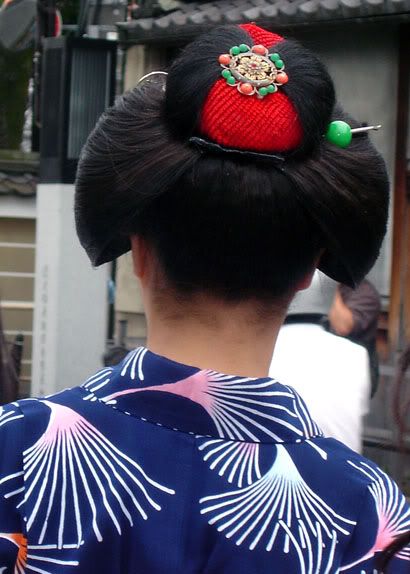
Her hair is dressed in the traditional wareshinobu style, which is said to accentuate the "loveliness" of the Maiko. This hairstyle is easily recognizable due to the two strips of red silk ribbon that has been woven through the mage (the mass of hair, or "bun" on the crown) visible from the front and the back. For three years after her debut, a maiko will wear this hairstyle.
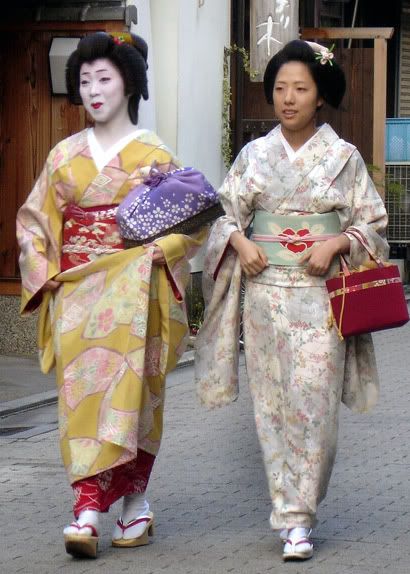
A Geiko of Gion, on her way to the Ichirikiya (Japan's most famous teahouse), talking to a high ranking maiko in casual kimono. Geiko wear an elaborate wig known as a katusra, while maiko have their own hair styled once a week.
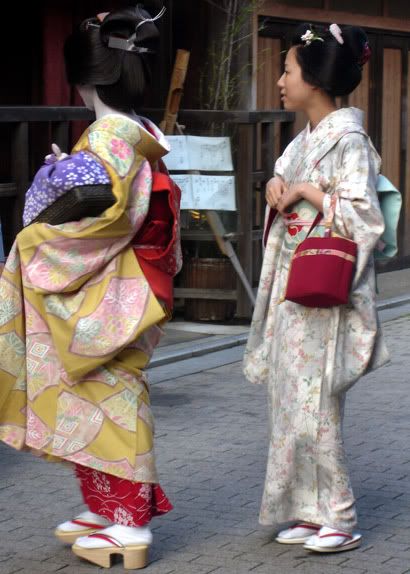

Pausing to chat with a patron of the Gion's expensive entertainment. Notice the elaborate top knot of the Geiko's wing, as well as her wooden clogs, which, unlike the okobo that maiko wear, are cut out in the center.
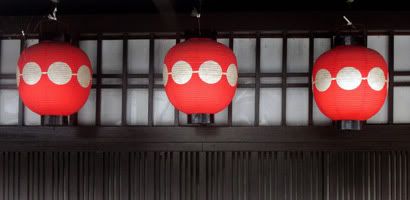
Red lanterns dangle from the lattice windows and walls of Tea houses. These lanterns display the outline of an array of six circles, skewered by a line. This is the famous tsunagi-dango (literally, 'linked dumplings'), and the crest of the Gion Kobu district. This design reputedly originated in an attempt to build solidarity among the six Gion areas during the Edo Period, when permission was granted to open entertainment establishments. Each area is represented by one dango (dumpling).
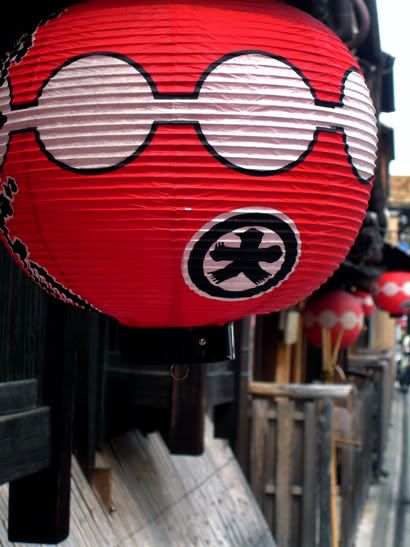
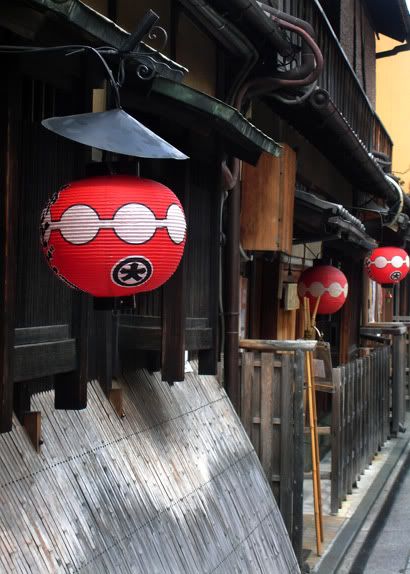
Kyoto's town houses have many distinctive features, such as red-ochre lattice windows, vertical-slit windows and spikes. One of the more peculiar is the inu-yarai that skirts many a house. Inu-yarai, or dog repellers, first appeared in the 17th-18th century. Their purpose was to protect houses from mud spattering up from the road, among other things (like dogs peeing on them)! They are usually made of bamboo or curved sticks, assembled in a frame that slopes out from the wall at an angle, a few feet above the ground, down toward the road. Scenes of slender strips of bamboo leading out in elegant curves from clean walls can be seen outside restaurants in Gion and on town houses in Nakagyo Ward.


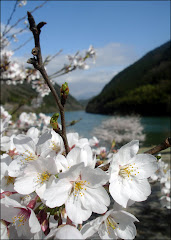

3 comments:
those ladies in yukatas are your friends ? i realized that you have many pictures of japanese women in yukatas, and maiko-san as well. have you tried any of the restaurants in the pontocho alley ?
I wish! But no, they're not my friends...Yet! They're maiko! I've only eten at Kappa Sushi in Pontocho, and it was the most delicous sushi I've ever eaten in my life! It was so fresh...It melted in my mouth like butter! And the unagi...to die for! I highly recommend it!
those are lovely photos. actually all your photos are lovely.
how do you get to take portraits? did you ask ppl for their permission? you're v brave!
Post a Comment